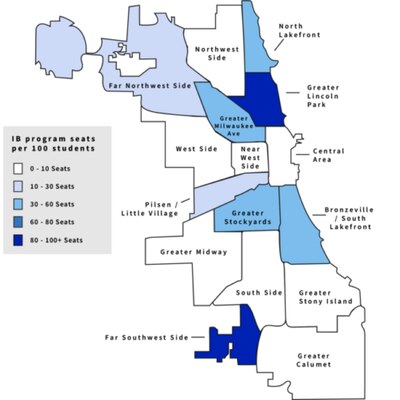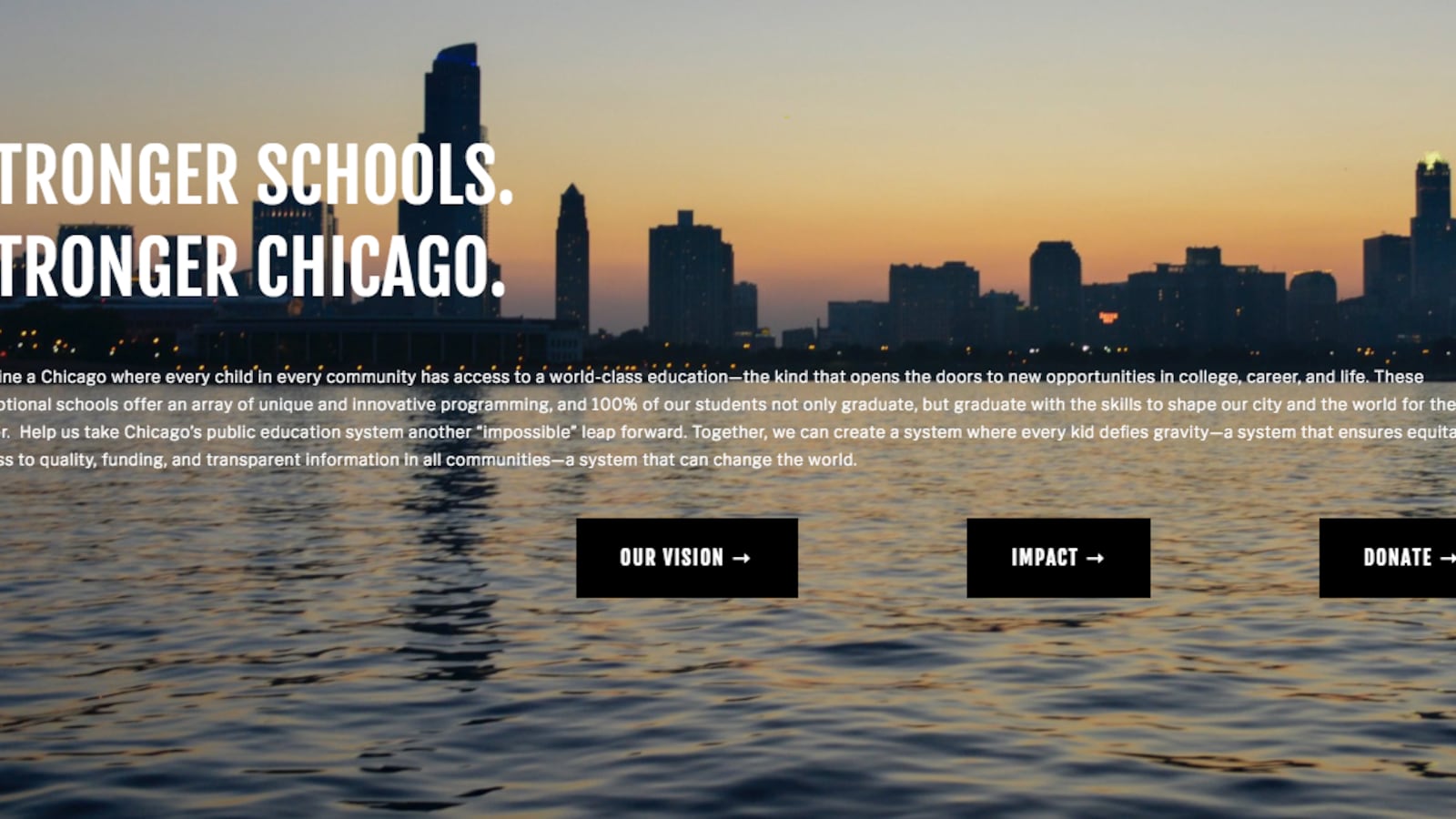Chicago Public Schools is finally releasing to the public a controversial report that paints in stark detail how many students skip out on their neighborhood schools. The report was posted on the district’s website Friday as CEO Janice Jackson announced the district is coming up with more ways to make neighborhood schools competitive against popular selective-enrollment and magnet programs that siphon away families in many areas of the city.
Read more: What’s the Annual Regional Analysis, anyway?
Chicago schools plan to start by offering more schools support in applying for the International Baccalaureate designation. International Baccalaureate, or IB, is a rigorous curriculum that is akin to advanced-placement courses. Elementary schools can have IB designations and so can high schools.
This move is significant, because the report — which claims there are 150,000 vacancies in the system, a higher number than has been previously reported — shows that students in Chicago have unequal access to academic programs. By adding IB programs, and other popular offerings such as career and technical curricula, the district appears to finally be unveiling a neighborhood school strategy.
Open-enrollment schools should be a more “competitive choice,” Mayor Rahm Emanuel said at a press conference Friday at Fiske Elementary on Chicago’s South Side, where he announced the IB expansion. Emanuel said last week he will not seek a third term for mayor.
The controversial document, titled the Annual Regional Analysis, was created by Kids First, a school-choice group. Kids First, backed by the business community, previously was called New Schools Chicago and advocated for charter growth here.
The report has caused a stir among some community groups who’ve previewed it. Because the school district has used enrollment figures to justify closing schools, some people are worried the report’s numbers could be used to propose more closings, turnarounds, and charter schools.
After the press conference, Chicago schools CEO Janice Jackson said the report’s release should be viewed as a step forward in transparency. ”From my time here, I’ve seen people ask the same questions over and over again. There’s been an ask around the district being more transparent, which I think is critically important. And as I stated, all of the data is publicly available.”
“What I hope people will see is our culture,” added Jackson, who was named CEO in January, “and a difference in that we are starting this dialogue with them so they have all the information needed to help us make better decisions.”
Jackson used today to make the case to invest more broadly in IB programs, which the report shows are unevenly distributed. CPS currently has 56 IB schools: 22 of them are high schools, and 34 are elementary schools.

The highest number of IB seats are in the wealthy, predominately white and affluent Greater Lincoln Park area, which includes the Near North Side, Lakeview, and Lincoln Park. In contrast, there are far fewer IB seats in predominantly black communities such as Englewood and Auburn Gresham, in the predominantly Latino Back of the Yards, and in the mostly black and Latino community of Ashburn. All of those communities are in the South Side planning region.
Principals have complained in the past that it was not clear how schools could apply for designations like IB. Jackson said today that the district is establishing a clearer application process for schools. Letters of intent will be due in October, and schools will be notified in the spring if they receive approval to pursue IB status.
Jackson said the point of releasing the report was to create a map for expanding such programs. “This is not about closing schools,” Jackson said. “My approach is simple — we have to start having honest conversations with community members and not making decisions for them.”
Kids First CEO Daniel Anello said in a statement that such conversations require a common research base. “We cannot improve schools if we don’t all have the same facts on school performance and access driving our collective efforts,” Anello said. “Positive change starts with transparency and a willingness to look at both our schools’ significant progress as well as where we still have room to improve.”
The teachers union has questioned the methodology used by Kids First to determine whether schools have empty seats. “In high school, where I taught for years, there’s a health center — several rooms that offer a really important service and make the school a nexus for keeping the school together,” CTU President Jesse Sharkey told Chalkbeat Chicago in an interview last week. “Does that count as an unused space because those are rooms that should be used for classes? That is not a fair way to look at it.”
At the press conference, Emanuel referenced first-of-its-kind data released in August from the district’s new GoCPS school-application portal. One surprising point in the data showed that 23 percent of high school students who were offered seats at both selective- enrollment and non-selective enrollment schools opted for the latter.

